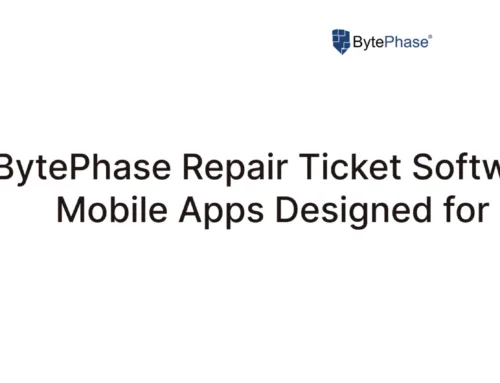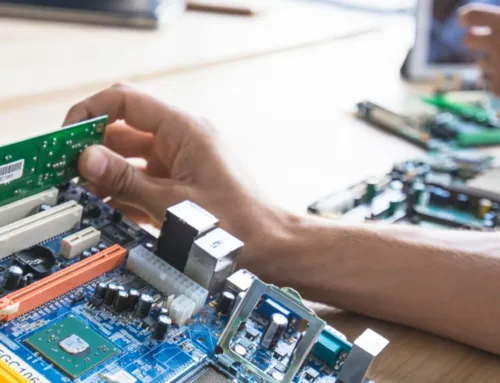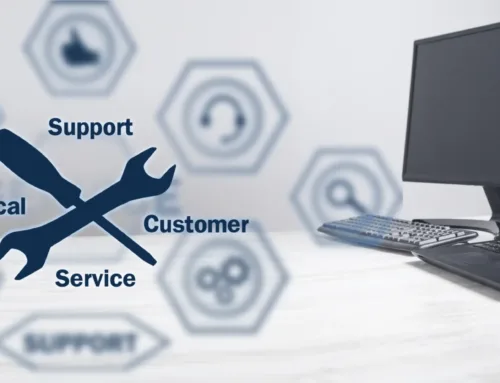Fix It or Forget It? A BytePhase Guide to Smart Electronics Decisions

For your customers, the moment their beloved laptop, smartphone, or gaming console malfunctions often brings a wave of frustration followed by a crucial question: Should I fix it, or is it time to sell it for parts or scrap and invest in something new? As a trusted repair shop powered by the efficiency of BytePhase Technologies, you are in a prime position to guide your clients towards making the most informed and cost-effective decision. This isn’t just about securing a repair job; it’s about building trust and establishing yourself as a reliable advisor in their tech journey.
What Factors Should My Customers Consider When Deciding?
Navigating the “fix or sell now” dilemma involves several key considerations. Encourage your customers to think about:
- The Cost of Repair: Obtain a transparent and detailed quote for the necessary repairs. Compare this cost to the potential value of the device after repair and the price of a new or used replacement.
- The Age and Condition of the Device: How old is the device? Has it experienced other issues recently? A device nearing the end of its lifespan might be more prone to future problems, making repair less economical in the long run.
- The Extent of the Damage: Is it a minor fix, like a screen replacement, or a more significant internal issue? Complex repairs can be costly and sometimes unreliable on older devices.
- The Availability and Cost of Replacement Parts: For older or less common devices, sourcing genuine or reliable replacement parts can be challenging and expensive.
- Their Data and Software: Will the repair process impact their data? Is the device still compatible with the software and applications they need? Upgrading might offer access to newer, more secure software.
- Their Budget and Needs: What is their immediate financial situation? What are their current technological requirements? A repair might suffice for basic use, while an upgrade could offer enhanced performance and features.
Leveraging the organized data and efficient workflows provided by BytePhase Technologies can significantly enhance your ability to assist customers with this critical decision:
- Accurate Diagnostics and Transparent Quotes: Use BytePhase to meticulously document the issues, track diagnostic steps, and generate clear, itemized repair quotes. This transparency builds trust and allows customers to accurately assess the financial implications of repair.
- Historical Repair Data: With BytePhase’s comprehensive records, you can quickly access the repair history of a specific device. This information can help customers understand if the current issue is an isolated incident or part of a recurring pattern.
- Parts Availability Insights: Your BytePhase inventory module can provide immediate information on the availability and cost of necessary replacement parts, allowing for more accurate repair estimates and timelines.
- Facilitating Trade-In or Recycling Options: BytePhase can help you track potential trade-in values for damaged devices or connect customers with responsible electronic recycling partners, offering them alternatives to simply discarding their old tech.
- Presenting Upgrade Options (Subtly Branded): While not directly a BytePhase feature, your organized customer data can help you identify customers who might benefit from an upgrade in the future. You can subtly position your shop as a resource for both repair and new device guidance, reinforcing your role as a comprehensive tech solution provider.
Not necessarily. While repairing can be a more sustainable and often cost-effective option, there are scenarios where selling for parts or upgrading makes more sense. For example:
- Beyond Economical Repair: If the repair cost exceeds the device’s current market value or the price of a comparable replacement, fixing it might not be the wisest financial decision.
- Obsolete Technology: If the device is significantly outdated and no longer supports essential software or applications, an upgrade is likely necessary to maintain productivity and security.
- Frequent Issues: A device with a history of multiple problems might continue to experience failures, making the initial repair cost just the first of many expenses.
When is Selling the Better Choice?
Selling a broken device for parts or scrap can be a viable option in several situations:
- High Repair Costs: As mentioned above, if the repair is prohibitively expensive.
- Severely Damaged Devices: Devices with extensive physical damage might not be economically repairable or reliable even after repair.
- Opportunity for Upgrade: If the user was already considering an upgrade, a device malfunction can be the catalyst to make that move, and selling the broken device can offset some of the new purchase cost.












